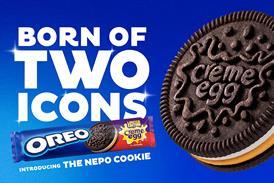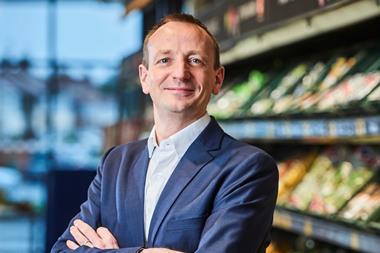Billions will be slashed off supply chain costs thanks to new global standards for product classification. Now, people just have to learn to talk the same language says Elaine Watson
News that the industry has finally got its act together and agreed global standards for product classification may have barely registered on the Richter scale amid the commotion surrounding Safeway and the storms clouds over Ahold.
But an agreement quietly rubberstamped this month between standards body EAN International and ACNielsen on the recommendation of the Global Commerce Initiative could slash billions off supply chain costs and completely transform the way business is done. Once this is in place, suppliers will be able to describe their wares using industry endorsed global standards, and then tout them to buyers across the globe by listing them in a global item registry a colossal electronic Yellow Pages if you like.
This will serve as a giant reference book for buyers to get instant access to what is available in their categories.
While none of this is of any great consequence to a small goats cheese supplier in Swansea, the likes of Ahold, Carrefour, Kraft, Unilever and Nestlé have been calling for it for years.
The business case for global standards calling a spade a spade, whether it's sold in Beijing or Bognor is simple. If buyers and suppliers are speaking the same language, communication will be faster, cheaper, easier and more accurate.
Using the same language across operating companies and borders also means the likes of Ahold and P&G can implement common processes across their businesses.
Currently, the file called up when a bottle of Sunny Delight is scanned at one retailer's till is not the same as the file called up when exactly the same product is scanned at the shop across the street because retailers have developed their own conventions for describing products which are usually driven by internal constraints such as warehouse systems.
Indeed, glance over till receipts for The Grocer 33, in which identical products are purchased at five different retailers, and you will see there is no standard way of describing a Müller fruit corner or McVitie's Homewheat.
Such disparities make scant difference to consumers. But the fact that retailers and suppliers are talking about exactly the same products in different ways wastes an extraordinary amount of time and money because any changes have to be input manually, making communication both tediously slow and prone to error.
When universal standards are adopted, more processes will be automated because trading partners' machines will simply talk to each other and scrap the intermediary.
Currently, when a supplier increases the weight of a product or alters its packaging, for example, all his retail customers have to manually update their systems with the new information. If all parties described and coded the product in the same way in the first place, customers could be informed of the change at the click of a button.
Likewise, collecting and validating data about a new product which can take retailers hours could be done in a matter of minutes if the process were automated, and the EAN International/AC Nielsen agreement is the first step in that process.
This also makes for more accurate data, which means fewer rejected goods at RDCs, fewer invoice queries and no complicated cross-reference files.
So having established global standards are worth having, how will they be implemented, and who will drive the change? David Timberlake, ACNielsen vice president marketing & business development, global services says: "Multinational retailers have historically taken the lead, but more and more global suppliers are appreciating the benefits that classification standards can bring to the collaboration process." Suppliers such as Unilever and Kraft for example have long been pushing for global standards, while there are obvious attractions for all but the smallest manufacturers in getting products listed on a registry perused by buyers across the globe.
Bricks, attributes and values
The lynchpin of the industry scheme is basic item classification categorising products according to a set of bricks' (eg wine), attributes (eg grape) and values (eg Merlot) which will be done via a new EAN.UCC owned web based schema hosted by AC Nielsen. Suppliers will be able to log on, map their products to the new standards (or outsource this task to a third party), and publish them.
Buyers can then search the global registry by category, such as red wine, target market, such as central Europe, by Global Trade Item Number (GTIN), a unique number assigned to products, or by Global Location Number (GLN), which details information such as plants, offices, stores or shipping points. To get more detailed information the registry is only an index buyers will be referred back to the original source of the data,which could be an online exchange such as Transora, or the manufacturer's own catalogue. This contains the extended attributes' of a product such as its weight, packaging, and dimensions, plus pictures vital for category management and catalogue maintenance. Developing standards for these extended attributes and there can be as many as 200 is where schemes such as ACNielsen's Global Passport completely separate from its work with EAN International come in. This cleans, validates and harmonises data in the legacy systems of manufacturers and retailers to the same standards so that they can talk to each other in the same language. It is also compliant with the new global standards.
There is still a baffling array of catalogue hosts, data pools, standards bodies and normalisation agents' offering to maintain, clean up or synchronise data to help suppliers and retailers communicate with each other more effectively.
But agreed global standards mean they are no longer simply ploughing down divergent paths trying to generate the critical mass to become the default standard and the ultimate prize global data synchronisation could finally be within the industry's grasp.
{{ANALYSIS }}
News that the industry has finally got its act together and agreed global standards for product classification may have barely registered on the Richter scale amid the commotion surrounding Safeway and the storms clouds over Ahold.
But an agreement quietly rubberstamped this month between standards body EAN International and ACNielsen on the recommendation of the Global Commerce Initiative could slash billions off supply chain costs and completely transform the way business is done. Once this is in place, suppliers will be able to describe their wares using industry endorsed global standards, and then tout them to buyers across the globe by listing them in a global item registry a colossal electronic Yellow Pages if you like.
This will serve as a giant reference book for buyers to get instant access to what is available in their categories.
While none of this is of any great consequence to a small goats cheese supplier in Swansea, the likes of Ahold, Carrefour, Kraft, Unilever and Nestlé have been calling for it for years.
The business case for global standards calling a spade a spade, whether it's sold in Beijing or Bognor is simple. If buyers and suppliers are speaking the same language, communication will be faster, cheaper, easier and more accurate.
Using the same language across operating companies and borders also means the likes of Ahold and P&G can implement common processes across their businesses.
Currently, the file called up when a bottle of Sunny Delight is scanned at one retailer's till is not the same as the file called up when exactly the same product is scanned at the shop across the street because retailers have developed their own conventions for describing products which are usually driven by internal constraints such as warehouse systems.
Indeed, glance over till receipts for The Grocer 33, in which identical products are purchased at five different retailers, and you will see there is no standard way of describing a Müller fruit corner or McVitie's Homewheat.
Such disparities make scant difference to consumers. But the fact that retailers and suppliers are talking about exactly the same products in different ways wastes an extraordinary amount of time and money because any changes have to be input manually, making communication both tediously slow and prone to error.
When universal standards are adopted, more processes will be automated because trading partners' machines will simply talk to each other and scrap the intermediary.
Currently, when a supplier increases the weight of a product or alters its packaging, for example, all his retail customers have to manually update their systems with the new information. If all parties described and coded the product in the same way in the first place, customers could be informed of the change at the click of a button.
Likewise, collecting and validating data about a new product which can take retailers hours could be done in a matter of minutes if the process were automated, and the EAN International/AC Nielsen agreement is the first step in that process.
This also makes for more accurate data, which means fewer rejected goods at RDCs, fewer invoice queries and no complicated cross-reference files.
So having established global standards are worth having, how will they be implemented, and who will drive the change? David Timberlake, ACNielsen vice president marketing & business development, global services says: "Multinational retailers have historically taken the lead, but more and more global suppliers are appreciating the benefits that classification standards can bring to the collaboration process." Suppliers such as Unilever and Kraft for example have long been pushing for global standards, while there are obvious attractions for all but the smallest manufacturers in getting products listed on a registry perused by buyers across the globe.
Bricks, attributes and values
The lynchpin of the industry scheme is basic item classification categorising products according to a set of bricks' (eg wine), attributes (eg grape) and values (eg Merlot) which will be done via a new EAN.UCC owned web based schema hosted by AC Nielsen. Suppliers will be able to log on, map their products to the new standards (or outsource this task to a third party), and publish them.
Buyers can then search the global registry by category, such as red wine, target market, such as central Europe, by Global Trade Item Number (GTIN), a unique number assigned to products, or by Global Location Number (GLN), which details information such as plants, offices, stores or shipping points. To get more detailed information the registry is only an index buyers will be referred back to the original source of the data,which could be an online exchange such as Transora, or the manufacturer's own catalogue. This contains the extended attributes' of a product such as its weight, packaging, and dimensions, plus pictures vital for category management and catalogue maintenance. Developing standards for these extended attributes and there can be as many as 200 is where schemes such as ACNielsen's Global Passport completely separate from its work with EAN International come in. This cleans, validates and harmonises data in the legacy systems of manufacturers and retailers to the same standards so that they can talk to each other in the same language. It is also compliant with the new global standards.
There is still a baffling array of catalogue hosts, data pools, standards bodies and normalisation agents' offering to maintain, clean up or synchronise data to help suppliers and retailers communicate with each other more effectively.
But agreed global standards mean they are no longer simply ploughing down divergent paths trying to generate the critical mass to become the default standard and the ultimate prize global data synchronisation could finally be within the industry's grasp.
{{ANALYSIS }}













No comments yet